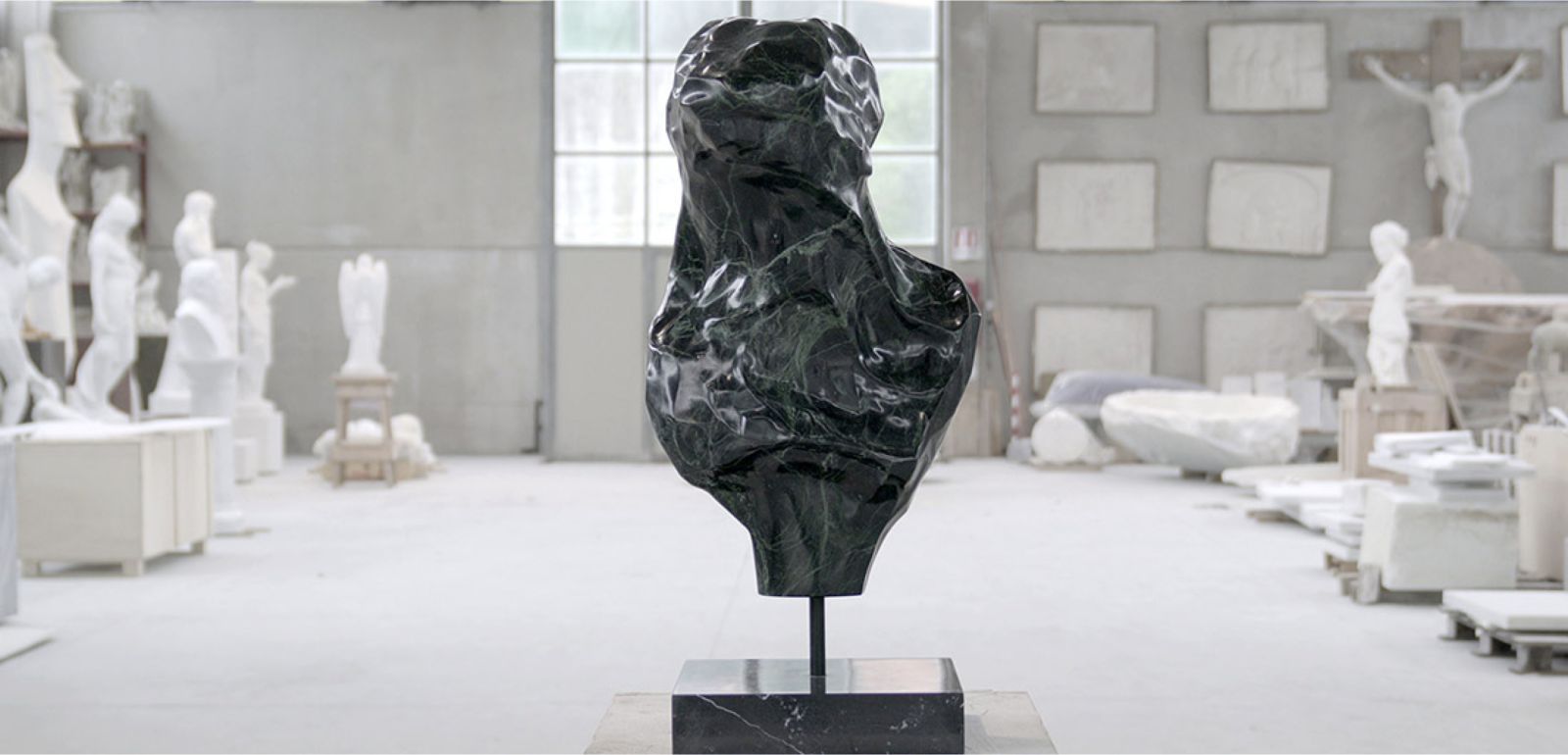Helin is a sculpture and video project probing individual human and artistic intent with a highly autonomous technology such as machine learning. Created from an initial dataset of 120,000 3D scans of historical busts to train a custom network architecture to generate a composite model. To remove bias from the dataset and establish a universal view towards human expression, Helin’s production included the incorporation of material across all accessible epochs and cultures from online sources such as 'scan the world'.
In the process of creation, each sculpture was re-oriented to face the z-axis, re-meshed to create a uniform topology, and normalized in 3D space. Furthermore, different 3D noise functions and subdivisions were used to create new arrangements and permutations of the original historical busts. This compound data is frozen in the form of a Carrara marble sculpture, carved by a robotic arm, challenging the status of art in the absence of a human author. As Helin translates assembled intelligence into a natural and tangible artefact, it offers insight into the historical and spatial data of human expressions. It embodies an organic data mirror emerging from collective historical heritage.
In this video rendering and sculptural objects, the artist Christian Mio Loclair asks "If an aesthetic object is created without any human leitmotif or purpose, do we witness an accidental product of nature or do we perceive new forms of artificial intentions?"
Stills from three synchronized 4k videos, courtesy of Christian Mio Loclair



Christian Mio Loclair practices at the interface of artistic and scientific
research. Using custom algorithms, data and digital devices, Loclair creates sculptures, video works and installations that aim to convey the aesthetics and frictions of both human and digital identity. In his work, Loclair explores the human body, organic movement and codified nature with opposing digital processes, data driven algorithms and machine learning. His artworks focus on the novel aesthetic identities that derive from the interplay of mathematical and poetic research, examining both creative and societal potentials of artificial intelligence as well as the oppositional myth of human versus machine.
Bust of Helin in Carrara marble (verde alpi ), 85 x 40 x 35 cm. Courtesy of Christian Mio Loclair


